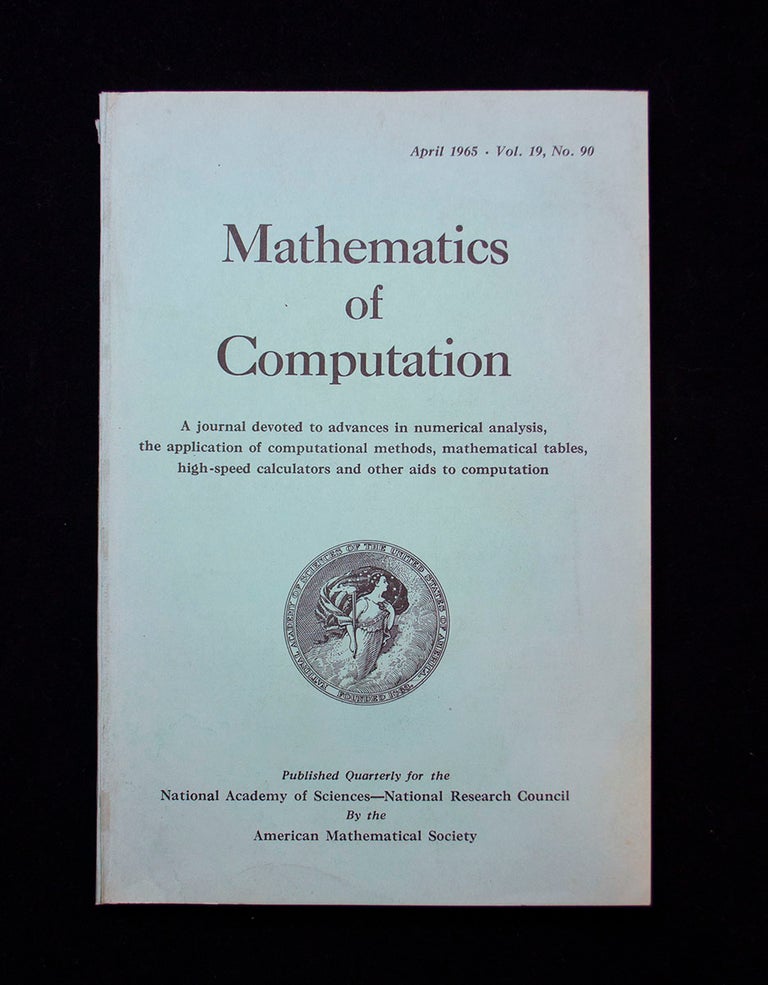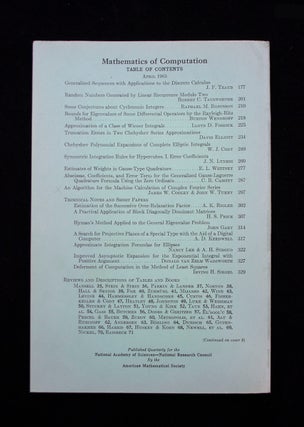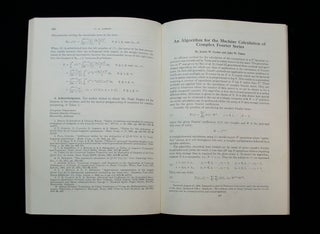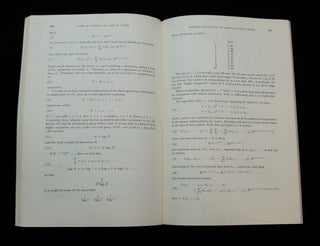The Introduction of the Cooley-Tukey Algorithm
Algorithm for the Machine Calculation of Complex Fourier Series. [within] Mathematics of Computation, volume 19, no.90.
Providence: National Academy of Sciences, 1965.
TUKEY, John W.. An Algorithm for the Machine Calculation of Complex Fourier Series. [within] Mathematics of Computation, volume 19, no.90 pp.297-301. Providence: National Academy of Sciences, 1965.
First edition of Cooley & Tukey's article entitled An Algorithm for the Machine Calculation of Complex Fourier Series within the periodical Mathematics of Computation, volume 19, no.90 pp.297-301. This article is the introduction of the Cooley-Tukey algorithm (known as the Fast Fourier Transform, FFT).
Original blue printed wrappers. Printed in black. Some very light wear along spine, otherwise wrappers and text are all about fine.
'Cooley and Tukey's paper introduced the fast Fourier transform algorithm (FFT) to the scientific computing world... The great economies of calculation effected by FFT made possible a number of major advances in scientific computing, including digital filtering, spectral analysis, and digital methods for processing speech, music, and images' (Origins of Cyberspace, 548).
'The introduction in 1965 of the Cooley-Tukey algorithm (known as the Fast Fourier Transform, FFT) greatly increases the speed of calculations and thereby the usefulness of the Fourier methods', Gedeon p.178.
"With John Tukey, Cooley wrote the fast Fourier transform (FFT) paper (Cooley and Tukey 1965) that has been credited with introducing the algorithm to the digital signal processing and scientific community in general." Tukey is also known as the possible creator of the word "bit" in computer terminology. (Computer Pioneers by J. A. N. Lee)
According to Christies "The paper had its basis in Tukey's demonstration that "if NI, the number of terms in a Fourier series, is a composite, N = ab, then the series can be expressed as an -term series of subseries of terms each. If one were computing all values of the series, this would reduce the number of operations from 2 to N log N... . Tukey's form of the algorithm, with repeated factors, has the great advantage that a computer program need only contain instructions for the algorithm for the common factor. Indexed loops repeat this basic calculation and permit one to iterate up to an arbitrary high NI, limited only by time and storage" (Cooley 1987, 133, 136)".
HBS 68508.
$1,350.
Price: $1,350.00
Item #68508




